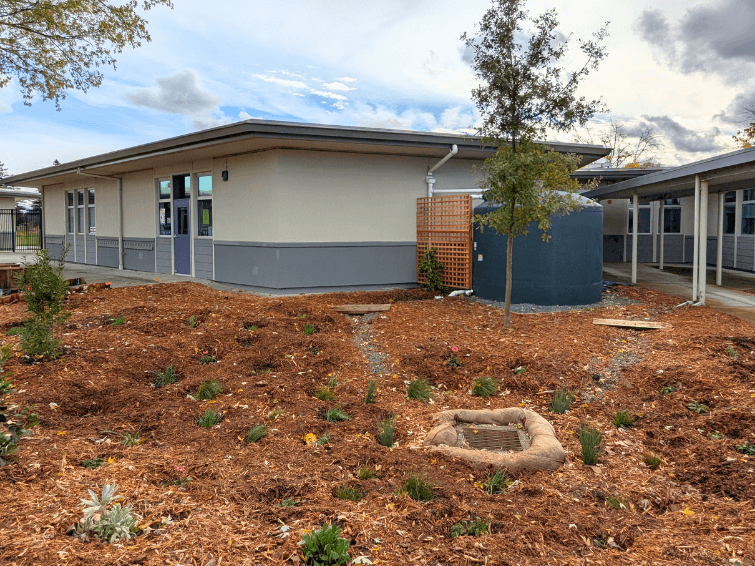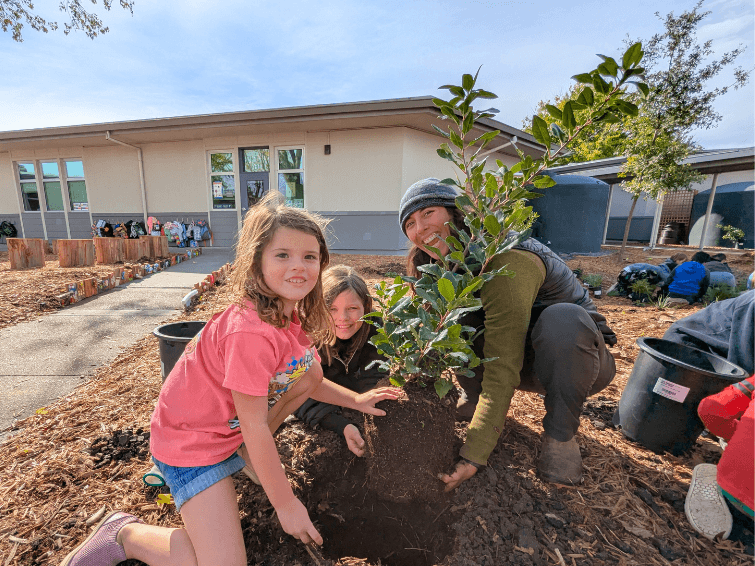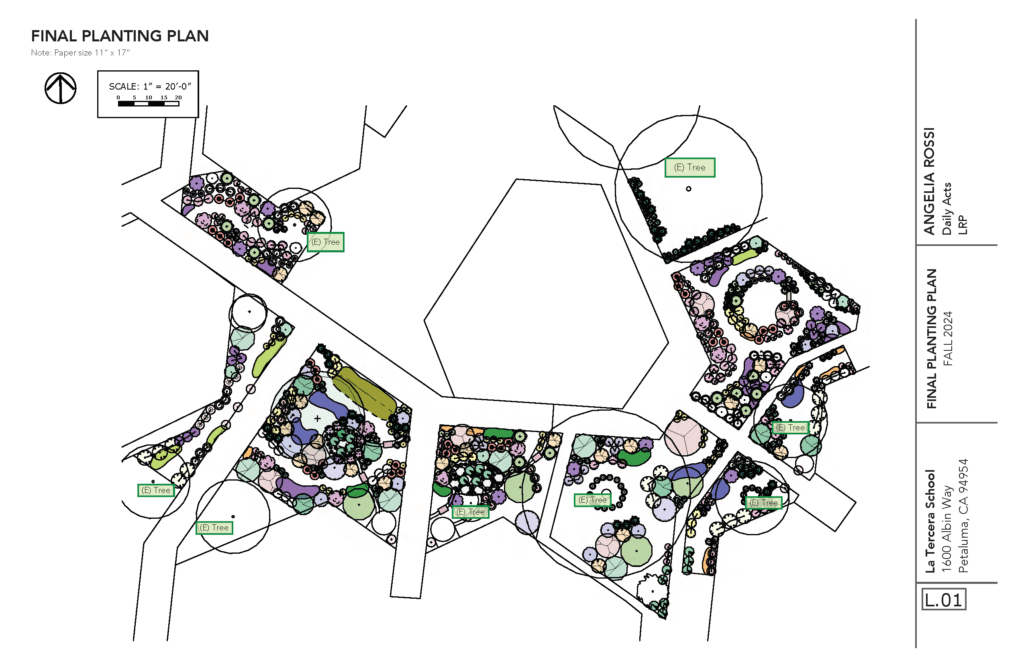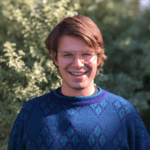When we spoke with Kate Lundquist and Brock Dolman from the Occidental Arts and Ecology Center back in 2022, they had begun to achieve some major victories in their decade-plus campaign to bring one of our favorite keystone species, Beaver, back to California (which would restore human and other habitats as well). If you haven’t heard our podcast with Brock and Kate, “Beaver Believers: How to Restore Planet Water” from our Nature’s Genius podcast series, you’re in for a treat. There have been many encouraging developments thanks to the Bring Back the Beaver campaign, here’s an update.
In 2024, OAEC was chosen by CA’s 2nd Senate District as nonprofit of the year. They created a cool Beaver website portal, a robust project with information about what’s happening with Beaver in California and the Bring Back the Beaver campaign over the last 15 years, and specific strategies for people who want to learn more. Also in 2024, OAEC sponsored AB 2196, a bill that passed unanimously and codified the CDFW Beaver Restoration Program.
Brock Dolman co-founded (in 1994) the Occidental Arts and Ecology Center where he co-directs the WATER Institute. A wildlife biologist and watershed ecologist, he has been actively promoting “Bringing Back Beaver in California” since the early 2000s. He was given the Salmonid Restoration Federation’s coveted Golden Pipe Award in 2012: “for his leading role as a proponent of “working with beavers” to restore native habitat.

Kate Lundquist, co-director of the Occidental Arts & Ecology Center’s WATER Institute and the Bring Back the Beaver Campaign in Sonoma County, is a conservationist, educator and ecological artist who works with landowners, communities and resource agencies to uncover obstacles, identify strategic solutions, and generate restoration recommendations to assure healthy watersheds, water security, listed species recovery and climate change resiliency.
KATE: Amazing things have happened around beaver conservation and the recognition of their value in the state of California since we last spoke in October 2022. We’ve been working with many different organizations and NGOs, and developed a beaver policy working group that has really become a focal point, bringing people to the table to support the evolution of beaver stewardship in California. That’s always our North Star as a strategy of change – educating folks, demonstrating the benefits, and ultimately changing the rules so that they support the kind of restoration and conservation that we need to do.
We kicked off 2023 by organizing a big tour with our elected officials and the heads of the California Department of Fish and Wildlife (CDFW), including the director and his second in command. We took folks out into the field to demonstrate the value of supporting this kind of conservation and beaver restoration.
By June that year, the CDFW handed down a new policy in response to a petition we had submitted, asking them to change language around permits when property owners suffered damage from Beaver – called “depredation” – and are asking for a permit to kill Beaver. The new policy encourages exhausting all options for coexistence first before issuing permits to kill beaver in response to conflict. It was a landmark policy. CDFW also now checks those properties to see if there are other endangered species relying on that habitat. That was really huge, getting more support from our state agencies.

BROCK: We were awarded a $2 million grant through the Nature-Based Solutions Restoration Fund to create a beaver coexistence program in collaboration with CDFW and other partners, including the nationally-focused Beaver Institute, to support Californians with technical assistance they need for this kind of conservation or coexistence. The program addresses the fact that there are landowners out there who are experiencing damage by beavers on their property in various ways. Because of that depredation policy change that Kate mentioned, the Department is telling them, we’re doing things differently, we have a plethora of different ways you can try to co-exist with Beaver.
Yet we recognize that we don’t actually have a sufficiently trained workforce in California of coexistence contractors, if you will, who are trained in these various techniques – the ability to assess a site, evaluate the appropriate solution, work with the landowner, install it, monitor it, etc. That’s a key piece of this coexistence program.
With the Beaver Institute, we’re doing detailed in-person and online training of “Beaver Corps” contractors who can work with landowners. If it’s needed, the program will help offset costs in order to reduce the burden on landowners. It’s an exciting and innovative program that skills-up the nature-based solutions workforce in both the process-based restoration and beaver coexistence, while offsetting some of the economic burden.

KATE: An area we’re also focused on in addition to coexistence efforts is how to enhance, expand, and actually mimic Beaver. Through our California Process-based Restoration Network, we have agency folks, NGOs, and restoration practitioners who are interested in these nature-based solutions. We’ve been making incredible progress, getting a lot of miles built where Beaver are helping expand the wetlands.
THREE SUCCESS STORIES
MAIDU CONSORTIUM
KATE: The Maidu Summit Consortium is a nonprofit with different Tribal entities: Greenville Rancheria, Auburn Rancheria – some federally recognized, others not. They’ve been organizing around landback efforts over decades, really. In October 2023, in partnership with the State of California, the Consortium carried out the first conservation translocation of Beaver in nearly 75 years.
There is a 2300-acre valley up in the North Fork Feather River Watershed just below Lassen Peak, a gorgeous valley that is their ancestral homelands, and many of the Tribes still use those lands. Through a Pacific Gas & Electric Company lawsuit settlement, they were finally given title in 2019 with CDFW and the Feather River Land Trust.
They initiated contact with us in 2015, and had already been doing work there and really wanted to bring Beaver back. This is a big mountain meadow with an incredible diversity of species and really good water sources. In terms of habitat, it’s already very beaver-supportive. Beavers were there up until the 1980s before people began poaching them or destroying their dams. We carbon-dated buried beaver wood we found there, and it actually predates contact. There’s a long history of this being a significant place for Beaver.
The Maidu Summit Consortium had been advocating for their return, but it didn’t happen because the Department wasn’t returning Beaver at that time. We put in recommendations and wrote letters and did a whole beaver recruitment strategy to help set the stage, saying it’s kind of plug-and-play, you can just put Beaver out there as is or you could do some of these other things and welcome them back and they would do great. And now they’re flourishing. There are already three family groups, and they’re reproducing. So that’s one case study.
TULE RIVER TRIBE
BROCK: Heading to the Southern Sierra, we have the work of the Tule River Tribe east of Porterville. The Tule River Tribe is a federally recognized Tribe with an amazing reservation, one of the larger ones in the state, upwards of 60,000 acres. Their land goes from very low elevation, about 1,000 feet up to about 8,000 feet and has incredible diversity with groves of giant sequoias up as big and grand as anything you would see in Sequoia National Park.
Back in 2015, one of their Tribal citizens and a council member at the time approached Kate and me about this fascinating rock art site there – a 500 or 1000 year-old pictograph. One of the organisms represented in the rock art is a beaver. We only know of two beaver pictographs in the state. The other one is more in Chumash territory, Cuyama Valley area. And so this council person, Kenneth McDermott, was thinking a lot about their water woes and supply issues and the river, and he’s like, geez, Beaver seems to have been around here a long time ago with our ancestors. Why not again?
That began a long journey of consideration. In both cases, what we at OAEC were asked to help with was really bringing our understanding of beaver biology and a methodology to do a feasibility assessment and evaluate the habitat. Is there enough water depth, volume, and flow? Is there food and cover to avoid predation? There’s a whole methodology and feasibility assessment we did in order to support both of these Tribal communities.
In June 2024, the Tule River Tribe had another conservation translocation, and there have been several translocation events that have happened with Tule River since then as well. Super exciting. Then a whole population of wolves moved down there afterward and now they’ve split into two packs. That’s a really interesting dynamic too, the interaction between some animals being rewilded by humans who assist their migration, and then some animals choosing to just hook it on their four legs and make their own way down there. Condors continue to loop around there. The Tribe is also working with DFW on a project that will hopefully move forward to reintroduce Tule Elk to the reservation.
FIRE
KATE: The Forest Service has been involved in a riparian meadow study, where they are looking at the impacts of beaver mimicry, these process-based restoration structures like beaver dam analogs as a post-fire treatment. So far the results have been positive. In places where nothing was done, there was a lot of sediment that went through; ash and the water and everything just rushed out of these meadows. In places where the structures were put in, a lot more of the post-fire sediment and ash and water was trapped, and those meadows are becoming sponges again, and are much more resilient. This is something that we’ve been observing out in the field and anecdotally, but now that the Forest Service is actually using lots of instruments to measure, the data is supporting what we’ve been observing.
There’s such a need for it, it’s a no-brainer and it’s exciting, innovative work. Our partners are doing research showing the efficacy of it. What the folks at the Tule River Tribe are doing at their landscape level working with fire is also super inspiring. There are solutions that could easily be deployed before a fire and post-fire. These lighter touch, easy to mobilize, low-cost, effective techniques offer a great response to the large-scale catastrophes that we’re having. We’re helping build legitimacy for beaver and process-based restoration across the state.

Dr. Emily Fairfax, co-authored a great paper about Smokey the Beaver and showing incidents where landscape-scale fire was helped by the beaver wetlands within those landscapes, they were much more resilient to fire. For example, the Dixie Fire burned over areas where there were beaver and those areas didn’t burn. She has great footage of that up in Last Chance Creek, for example, very close to where I am right now near Lassen Peak. And then similarly, she’d been looking at fires as they go over and seeing places where either beaver have been or where beaver mimicry has happened. And in one case, Wilbur Hot Springs where they’ve been doing some beaver mimicry had a fire, and the only green spot in the fire footprint was in fact where the restoration had happened, and that showed up on the satellite imagery immediately.
BROCK: Case studies where beavers and the habitat they create that’s wetted adds a bit of resiliency and integrity within these larger landscape matrices. Whether that’s fire scars or during droughts, there’s just more water availability for supporting other species functioning as a refugia, whether it’s a fire refugia for animals to seek refuge literally in, or that’s the only place where there’s water and streams are flowing for the fish during droughts or in the flood space. How does it ameliorate that? So they’re very locationally specific benefits in certain ways.

The overarching pattern that we can see based on all those different expressions of success that Kate talked about is this increasing nexus, especially at the state level, of nature-based solutions and climate-smart solutions. California is experiencing real challenges with global/climate “weirding” driven wildfires, droughts, floods and biodiversity losses, while needing to sequester carbon and reduce greenhouse gas emissions. Beaver as a species continues to be found as a helpful partner for addressing, ameliorating, and mitigating appropriately at different scales, impacting fire and water and carbon and life and resiliency. It’s just so emblematic. Beaver is a keystone species, of course. It’s an intersectional species by its own very nature and has been making its way into so many people’s worldviews. It’s been really gratifying – but we have our work cut out for us to continue to really excel and amplify those areas where beaver really do have an impact.
Beaver can support a piece of a puzzle of resiliency. I think it’s worth saying that in the best case scenario, in a fully beavered watershed, beaver habitat might only represent 10% of the surface area. We shouldn’t try to put the burden on the backs of the beavers like they’re going to save the whole dang watershed from ridge to river, because the majority of any watershed has never been beaver habitat. It won’t be that.
We try to be sober about that and not too hyperbolic, because there’s a lot of, “Yay, beaver saved the planet!” We remind folks that, well, they’re only in the northern hemisphere and they’re in a subset of the northern hemisphere, and 70% of the planet is actually ocean water to begin with. But where they’re happy and where they’re being the best beavers they can be, those places indisputably are rocking, like wetlands and riparian corridors. We know disproportionately they support higher biodiversity and resiliency. So the beaver bang-for-the-buck is disproportionately beneficial, and we should learn to live with them and support them wherever they want to be happy.

Resources
Beaver Believers: How to Restore Planet Water – Bioneers Podcast
Beaver website portal – OAEC
How We Won: Lessons Learned & Replicable Strategies for Changing Beaver Restoration Policies – Video Presentation
Are You a Beaver Believer? – Secretary Speaker Series, held monthly by Wade Crowfoot, CA Natural Resources Agency Secretary
Beaver Believer: How Massive Rodents Could Restore Landscapes and Ecosystems At Scale – Article by Teo Grossman
Fire and Water: Land and Watershed Management in the Age of Climate Change
Basins of Relations: A Reverential Rehydration Revolution – Brock Dolman
Beaver in California: Creating a Culture of Stewardship
The WATER Institute’s Beaver in California reader
Sign up for OAEC newsletter
Deep Dive: Intelligence in Nature
Earthlings: Intelligence in Nature | Bioneers Newsletter
OAEC trains dozens of practitioners who want to learn and then practice beaver and process-based restoration skills through collaborations with their Tribal partners: the CalPBR Network, North Bay Jobs With Justice, Sonoma County Regional Parks and many others.





















































































